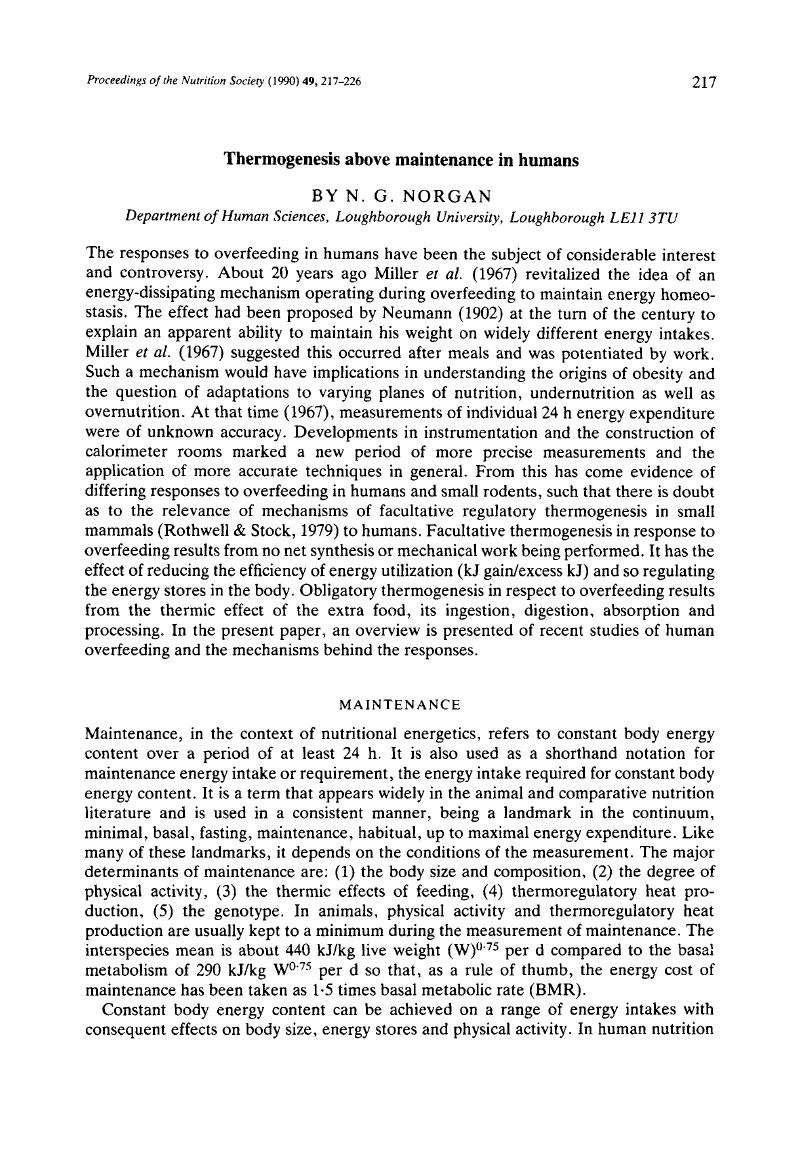Crossref Citations
This article has been cited by the following publications. This list is generated based on data provided by Crossref.
Dauncey, M.J.
1991.
Whole-body calorimetry in man and animals.
Thermochimica Acta,
Vol. 193,
Issue. ,
p.
1.
Selberg, Oliver
Schlaak, Sabine
Balks, Hans J.
von zur Mühlen, Alexander
and
Müller, Manfred J.
1991.
Thermogenic effect of adrenaline: interaction with insulin.
European Journal of Applied Physiology and Occupational Physiology,
Vol. 63,
Issue. 6,
p.
417.
Müller, H. L.
and
Kirchgeßner, M.
1992.
Energiebilanz bei wiederholter Unter- und Überernährung im Modellversuch an Sauen.
Zeitschrift für Ernährungswissenschaft,
Vol. 31,
Issue. 3,
p.
178.
1992.
Abstracts of Communications.
Proceedings of the Nutrition Society,
Vol. 51,
Issue. 1,
p.
1A.
Ulijaszek, Stanley J.
1992.
Human energetics methods in biological anthropology.
American Journal of Physical Anthropology,
Vol. 35,
Issue. S15,
p.
215.
Livesey, G.
1992.
The Energy Values of Dietary Fibre and Sugar Alcohols for Man.
Nutrition Research Reviews,
Vol. 5,
Issue. 1,
p.
61.
Harper, Mary‐Ellen
Patrick, John
and
Himms‐Hagen, Jean
1993.
Altered Brown Adipose Tissue and Na,K Pump Activities During Diet‐Induced Obesity and Weight Loss in Rats.
Obesity Research,
Vol. 1,
Issue. 2,
p.
106.
Shariatmadari, F.
and
Forbes, J. M.
1993.
Growth and food intake responses to diets of different protein contents and a choice between diets containing two concentrations of protein in broiler and layer strains of chicken.
British Poultry Science,
Vol. 34,
Issue. 5,
p.
959.
Steinruck, U.
Mult, H. c.
and
Kirchgessner, M.
1993.
Eiweißbedarf, N‐Bilanz und Proteinverwertung von Legehennen bei Selbstauswahl unterschiedlicher Proteinrationen.
Journal of Animal Physiology and Animal Nutrition,
Vol. 69,
Issue. 1-5,
p.
44.
Brown, Jacqueline C.
and
Livesey, Geoffrey
1994.
Urinary energy excretion in rats fed guar gum: Implications for putative thermogenesis.
Food Hydrocolloids,
Vol. 8,
Issue. 1,
p.
69.
Ulijaszek, Stanley J.
1996.
Energetics, adaptation, and adaptability.
American Journal of Human Biology,
Vol. 8,
Issue. 2,
p.
169.
Norgan, N. G.
and
Ferro‐Luzzi, A.
1996.
Comprehensive Physiology.
p.
1391.
Joosen, Annemiek M.C.P.
Bakker, Arjen H.F.
and
Westerterp, Klaas R.
2005.
Metabolic efficiency and energy expenditure during short-term overfeeding.
Physiology & Behavior,
Vol. 85,
Issue. 5,
p.
593.
Alemany, Marià
2011.
Different effects of hyperlipidic diets in human lactation and adulthood: growth versus the development of obesity.
Reproductive Biology and Endocrinology,
Vol. 9,
Issue. 1,
p.
101.
Alemany, Marià
2013.
Adjustment to dietary energy availability: from starvation to overnutrition.
RSC Adv.,
Vol. 3,
Issue. 6,
p.
1636.
Bray, George A.
and
Bouchard, Claude
2020.
The biology of human overfeeding: A systematic review.
Obesity Reviews,
Vol. 21,
Issue. 9,
Alemany, Marià
2024.
The Metabolic Syndrome, a Human Disease.
International Journal of Molecular Sciences,
Vol. 25,
Issue. 4,
p.
2251.



